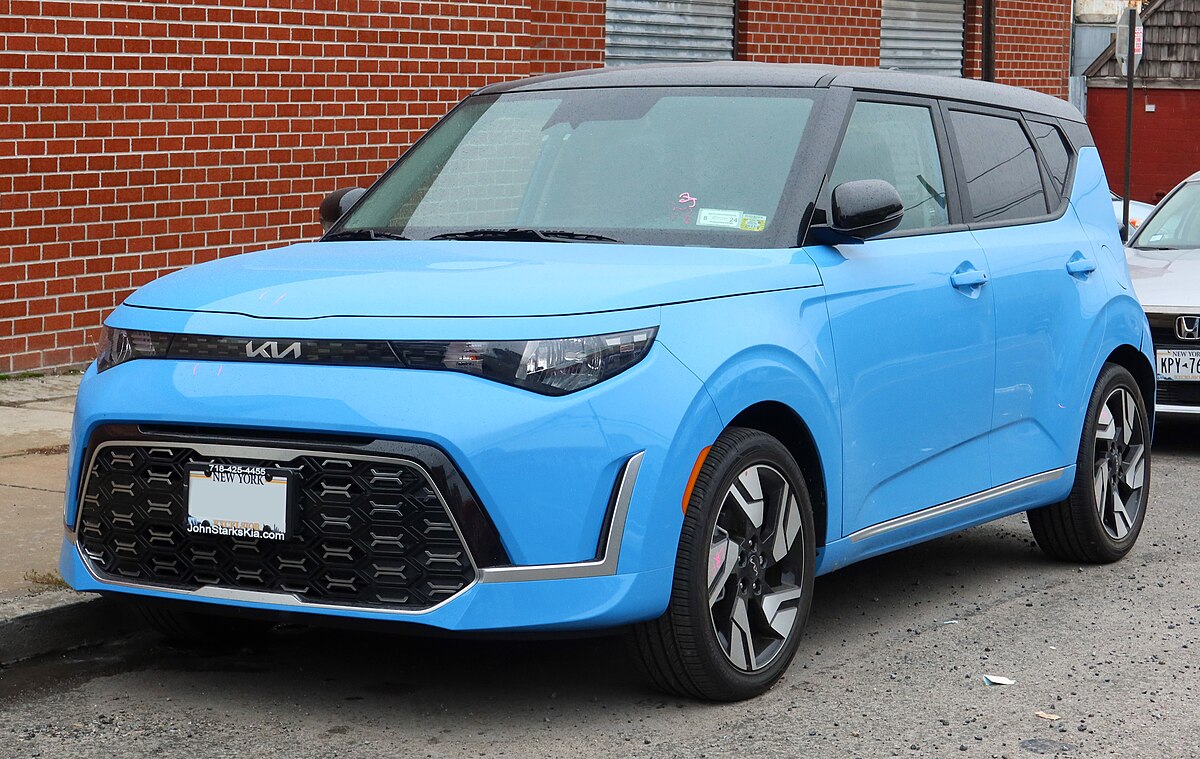When choosing a car for a teenage driver, safety is usually the number one concern—and rightfully so. But one of the most overlooked factors contributing to safety is visibility.
Teen drivers are still developing their spatial awareness and driving instincts, and a vehicle with excellent visibility can make a world of difference in avoiding accidents and building confidence behind the wheel.
Compact cars, with their smaller footprints and generally lower window sills, are already well-suited to new drivers, but not all compact cars are created equal in terms of outward visibility.
Modern vehicle design often prioritizes style, aerodynamics, and crash safety—sometimes at the cost of visibility. Sloping rooflines, thick rear pillars, and tiny rear windows can create massive blind spots, making parking, merging, and navigating busy intersections more stressful for new drivers.
However, some compact cars buck this trend by offering large glass areas, upright seating positions, slim roof pillars, and expansive windshields that provide better sightlines in all directions.
These design features help teen drivers feel more in control and reduce the need to rely heavily on sensors or cameras to compensate for poor lines of sight.
In this article, we explore ten compact cars that go above and beyond in providing excellent visibility for teenage drivers.
We focus on models that balance smart design, user-friendly technology, and practical safety features—giving teens (and their parents) peace of mind on the road.
From hatchbacks with massive rear windows to sedans with low beltlines and wide-angle mirrors, each entry on this list prioritizes the kind of all-around visibility that makes driving safer and less intimidating for young motorists.
Let’s dive into the top compact cars that help teen drivers see—and be seen—better than the rest.
Also Read: 10 Cars Where Rear Seatbelt Mounting Gets in the Way
1. Honda Civic
The Honda Civic has been a benchmark in the compact car segment for decades, and one of its most underrated strengths is its excellent outward visibility.
Whether it’s the sedan or the hatchback variant, the Civic delivers a near-panoramic experience behind the wheel, making it a perfect pick for teenage drivers who need a clear view of their surroundings.
One of the Civic’s major visibility assets is its low dashboard and cowl, which keeps the front windshield area wide and uncluttered. This, combined with thin A-pillars, ensures the driver has a broad, uninterrupted forward field of vision.
Many vehicles with thicker A-pillars obstruct a driver’s view when turning or pulling into an intersection—something Honda carefully avoids in the Civic’s design.
To the sides, the Civic features large side windows and low beltlines, making it easier for new drivers to check blind spots and spot approaching cyclists or pedestrians. Rear visibility is also impressive, especially in the sedan.
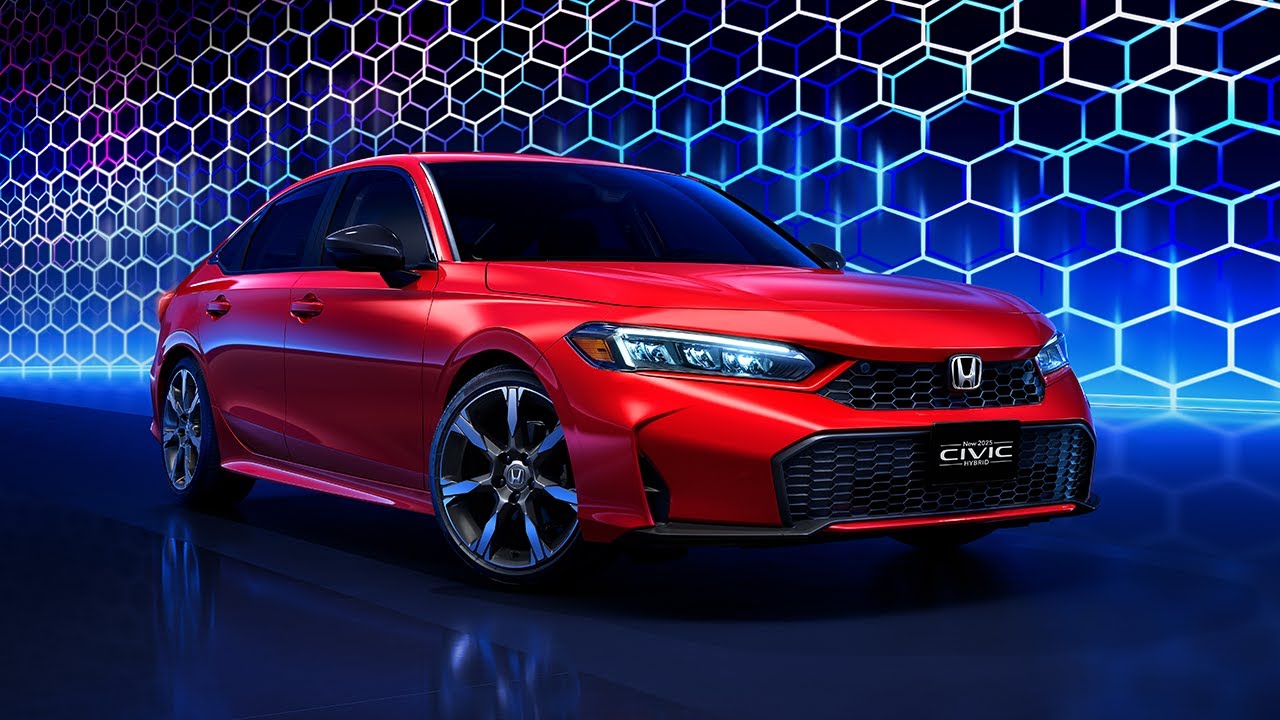
The rear window is generously sized and framed with slim C-pillars, reducing the need for guesswork when backing up.
Additionally, the Civic offers practical tech that supplements its already strong visibility. Many trims include Honda LaneWatch—a camera system that displays a live feed of the passenger-side blind spot on the infotainment screen when the right turn signal is activated.
While this feature has been phased out in newer models in favor of traditional blind-spot monitoring, it still highlights Honda’s commitment to driver awareness.
Parking is made easier with a multi-angle rearview camera, which allows drivers to choose between wide, normal, and top-down views. Combined with the Civic’s tight turning radius and agile handling, this gives teens an extra edge in parking lots or narrow driveways.
In short, the Honda Civic offers a visibility-first design that supports young drivers as they gain experience. It’s a well-rounded compact that sees safety through more than just crash scores—it sees it through better lines of sight.
Also Read: 5 Cars With Legendary Brakes and 5 With Infamous Stopping Power
2. Subaru Impreza
For teenage drivers navigating busy roads or tight neighborhood streets, the Subaru Impreza offers an excellent combination of outward visibility, all-weather confidence, and practical features.
Available in both sedan and hatchback versions, the Impreza’s design places a strong emphasis on clear sightlines and ease of operation—ideal for those just starting to build their driving skills.
A defining characteristic of the Impreza is its large greenhouse—an expansive array of windows that surrounds the cabin. The windshield is wide and low-sloping, offering a clear and commanding view of the road ahead.
Subaru keeps the A-pillars relatively thin, minimizing blind spots during turns or merges. Side mirrors are also mounted on the doors rather than the base of the A-pillars, which further opens up the driver’s forward-peripheral view.
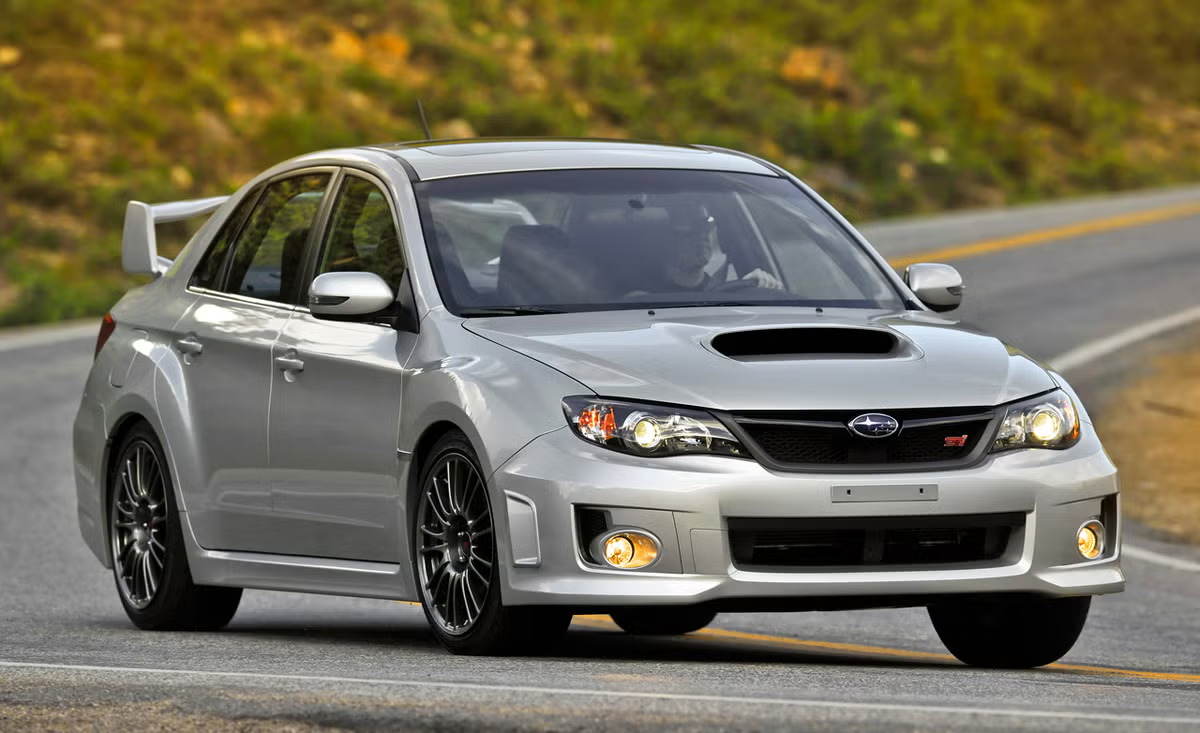
The Impreza’s side and rear visibility are equally commendable. Large side windows with upright proportions make it easy to glance over shoulders and confirm lane changes. The rear window is taller than in many competing hatchbacks, providing a better view when reversing or monitoring traffic behind.
Backing up is also easier thanks to the standard rearview camera with dynamic guidelines, which come in handy in crowded school parking lots or suburban driveways.
Higher trims include blind-spot detection with rear cross-traffic alert, helpful tools that reinforce spatial awareness without replacing the fundamentals of visual line-of-sight driving.
The Impreza also comes standard with Subaru’s EyeSight Driver Assist Technology, which includes forward collision warning, adaptive cruise control, and lane departure warning.
These features provide a safety net, but the real foundation lies in the car’s strong visibility, giving teens the tools they need to make good decisions in the first place.
In addition, the Impreza’s standard all-wheel drive improves handling in bad weather—a reassuring bonus for parents in snowy or rainy climates.
All told, the Subaru Impreza offers one of the most visibility-friendly designs in the compact class, making it a great choice for new drivers learning the ropes.
3. Toyota Corolla Hatchback
The Toyota Corolla Hatchback may be compact in size, but it delivers big when it comes to visibility—a feature that makes it particularly well-suited for teenage drivers still mastering spatial awareness.
Toyota has taken deliberate steps in the design of the Corolla Hatch to ensure a commanding outward view, contributing to both safety and driver confidence.
At the front, the Corolla Hatch offers a wide windshield with a low dash layout, which helps improve sightlines over the hood and across intersections.
The A-pillars are carefully shaped and slightly raked, giving a more open feel to the front cabin without compromising structural integrity. Visibility when turning or merging is clean and uninterrupted, especially compared to sportier hatchbacks with chunkier frames.
Where the Corolla Hatchback really shines is in side and over-the-shoulder visibility. Thanks to a relatively short rear end and large side windows, teen drivers can easily check for pedestrians or cyclists in adjacent lanes.
The rear quarter glass behind the doors also helps minimize blind spots—a detail often overlooked in compact hatchback designs.
Rearward visibility is decent, though the hatchback’s styling does taper the rear window slightly. To compensate, Toyota equips the car with a standard backup camera and available blind-spot monitoring, which work together to support parking and reversing maneuvers. These features offer added confidence, especially in school zones or parking lots.

Another major benefit is the inclusion of Toyota Safety Sense 3.0, a suite of standard active safety features. It includes lane departure alert, pre-collision system with pedestrian detection, and dynamic radar cruise control.
While these assist with safety, the excellent base visibility of the car remains its most teen-friendly feature.
The Corolla Hatchback is also nimble and easy to maneuver, thanks to its short wheelbase and light steering. This helps young drivers confidently park, turn, and change lanes—situations where clear visibility can dramatically reduce stress.
With its sleek design, strong safety credentials, and visibility-enhancing features, the Toyota Corolla Hatchback proves that practicality and style can go hand in hand. For teen drivers, it’s a smart and sensible introduction to the road.
4. Kia Soul
The Kia Soul stands out in the compact car segment for its boxy, upright design—a shape that pays dividends when it comes to outward visibility.
While its styling is unconventional, the Soul’s vertical stance and massive glass areas give drivers of all sizes a commanding view of their surroundings, making it one of the best vehicles for teens learning to navigate traffic with confidence.
One of the Soul’s biggest advantages is its tall roofline and large windows. The high seating position, combined with a relatively short hood and low beltline, makes it easy for drivers to see all four corners of the vehicle.
This is especially helpful when making tight turns or navigating busy intersections—common scenarios where new drivers often struggle.
The front pillars (A-pillars) are moderately thick but shaped to avoid blocking too much of the forward view.
The upright windshield feels expansive, and the large front windows allow for ample side visibility. The side mirrors are positioned lower on the doors, reducing blind spots while maintaining full rearward visibility.
Rear visibility is another highlight. The square rear window provides a clear, unobstructed view, unlike the sloping glass commonly found on modern hatchbacks or sedans.
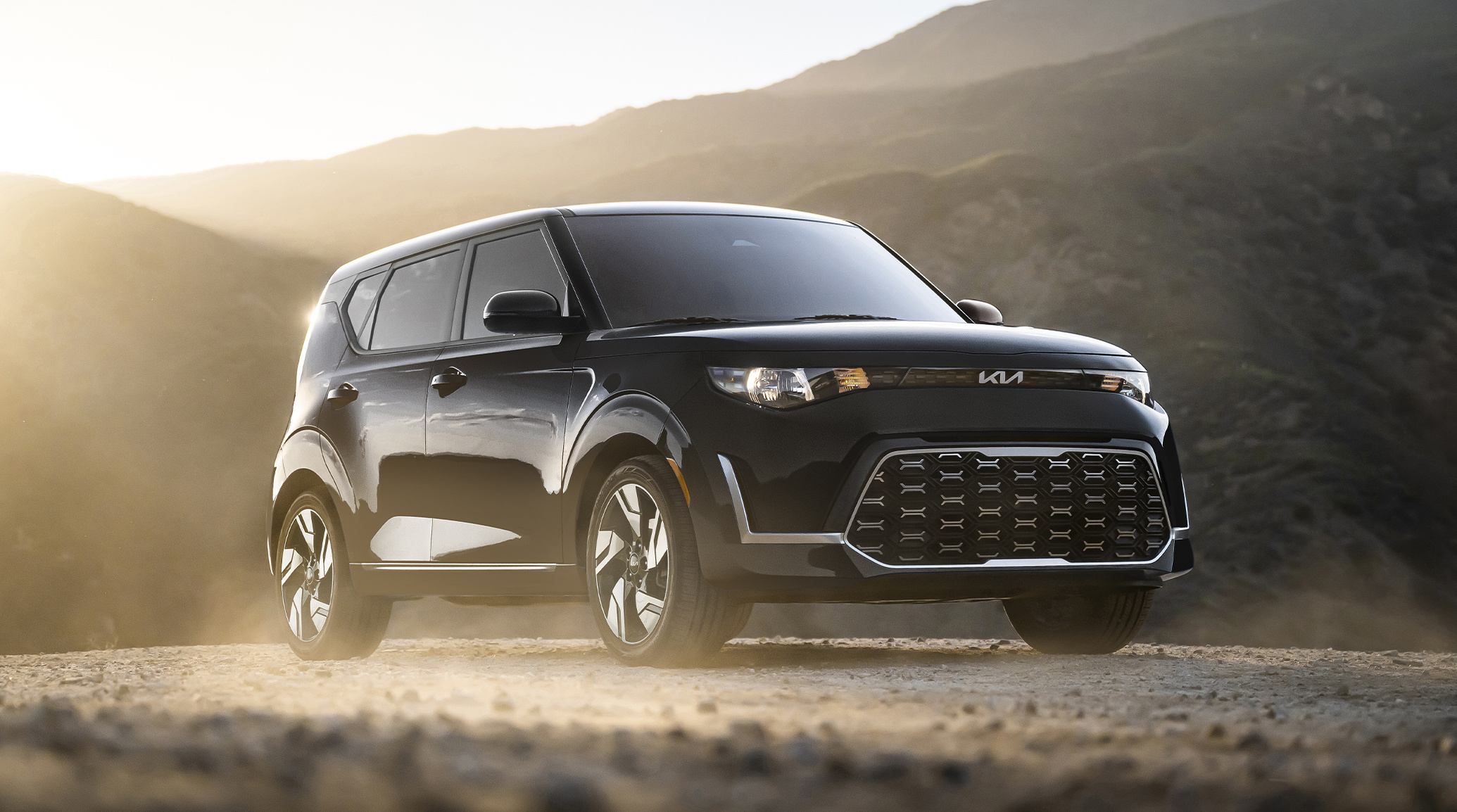
Additionally, the C-pillars are wide but don’t severely compromise visibility, thanks to the inclusion of rear quarter glass that opens up the field of view when checking over the shoulder.
All models come with a standard rearview camera, and higher trims offer blind-spot monitoring and rear cross-traffic alert. These features enhance the Soul’s already-strong visibility, giving teens added support during lane changes or when backing out of a tight spot.
Because of its tall stature, the Soul also offers exceptional headroom and upright seating, which elevates the driver’s eyes and helps them see farther down the road. The seating position is almost SUV-like, which can provide teen drivers with a sense of security and improved sightlines.
Compact, user-friendly, and visually commanding, the Kia Soul is a great fit for teenagers who need a vehicle that emphasizes clarity and control. Its quirky styling may be polarizing, but its driver-friendly design makes it one of the smartest choices for visibility-focused driving.
Also Read: 5 Cars With the Best Engine Cooling Systems and 5 Prone to Overheating
5. Volkswagen Golf
The Volkswagen Golf has long been recognized for its precision engineering, and one of its most overlooked strengths is its exceptional visibility.
For teenage drivers learning how to read the road and make quick spatial judgments, the Golf offers a driver-centric cockpit with excellent outward sightlines in all directions.
From the front, the Golf’s windshield is relatively upright, providing a wider and more natural field of view. The dashboard is low and cleanly designed, keeping visual clutter to a minimum and ensuring teen drivers can easily see over the front of the car.
Slim A-pillars further enhance peripheral visibility, particularly when turning through intersections or scanning for pedestrians at crosswalks.
The Golf’s side visibility is bolstered by large windows and a low beltline—especially helpful when checking blind spots or merging onto highways.
The rearview mirrors are large and positioned to offer a clear look at the adjacent lanes without requiring exaggerated head movements, an important aid for new drivers who may still be developing mirror-checking habits.
Rear visibility is another strong point. The rear window is wide and framed by modestly sized C-pillars, giving the driver a clear sense of space when backing up or parallel parking. The standard rearview camera is bright and accurate, and higher trims may include park distance sensors that provide audible feedback in tight spaces.
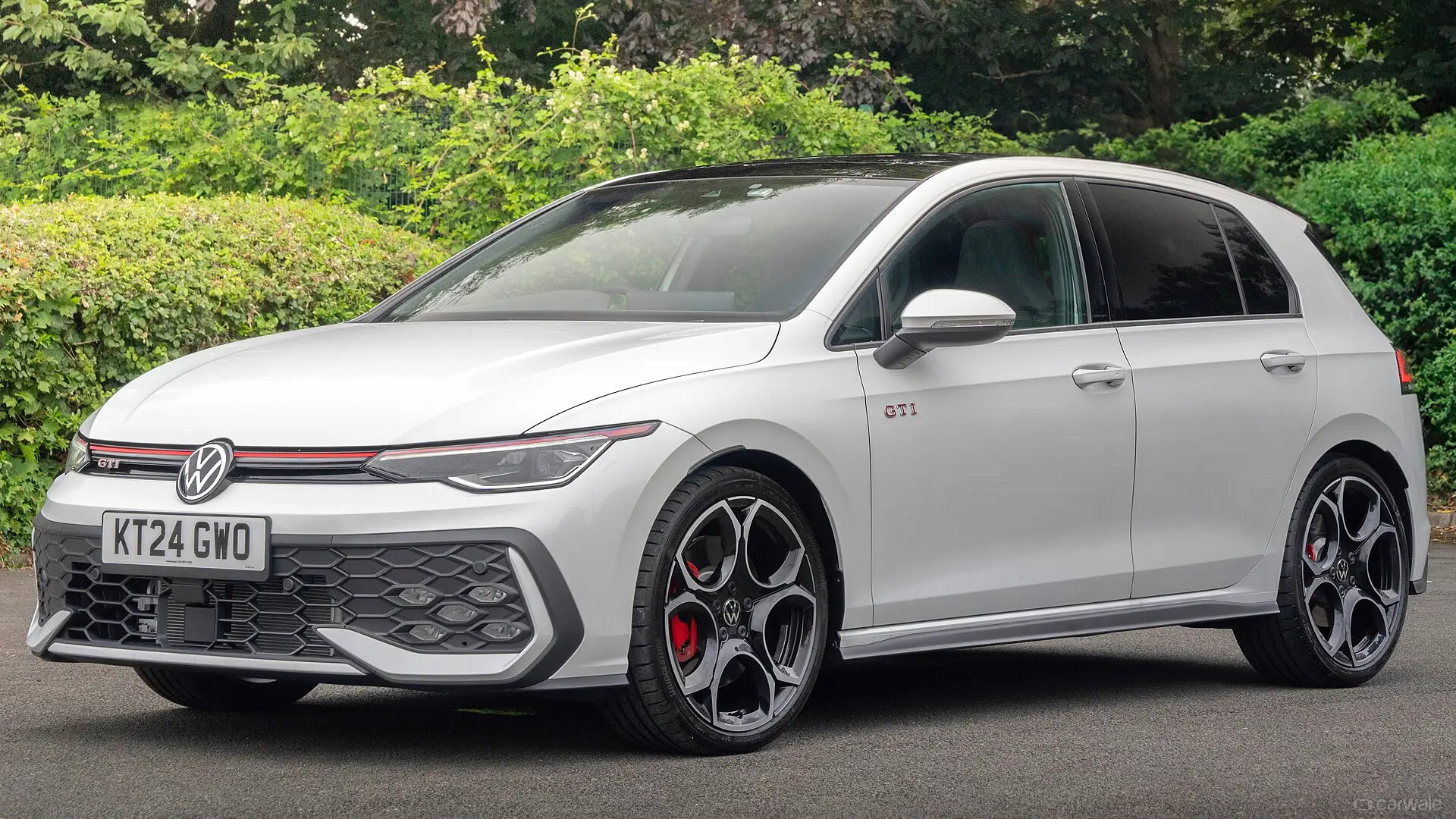
One underrated feature is how well the Golf’s seating position aligns with window height. This balance allows even shorter drivers (often a concern with younger teens) to comfortably see the road without needing additional cushions or seat height adjustments.
The seats also offer strong lumbar support, helping reduce fatigue during longer drives—perfect for weekend trips or commutes to school.
Compact, composed, and visibility-friendly, the Volkswagen Golf presents itself as an intelligent, confidence-building option for teens. It proves that you don’t need to sacrifice driving enjoyment to get clarity and safety from behind the wheel.
6. Hyundai Elantra
The Hyundai Elantra is a compact sedan that skillfully blends modern styling with practical safety features, including excellent outward visibility—a characteristic that makes it an ideal choice for teenage drivers.
While its sharply creased body and aggressive design may suggest a focus on form, the Elantra doesn’t sacrifice function, particularly when it comes to helping new drivers see their surroundings clearly.
At the front, the Elantra features a broad, sloped windshield paired with a low dashboard and relatively slim A-pillars. This configuration allows for an unobstructed view of the road ahead, especially important when pulling into intersections or navigating through tight urban traffic. The driver’s position is low but supportive, giving a natural sightline across the hood.
Side visibility is also commendable. The Elantra’s door-mounted side mirrors free up the forward view and reduce pillar-induced blind spots.
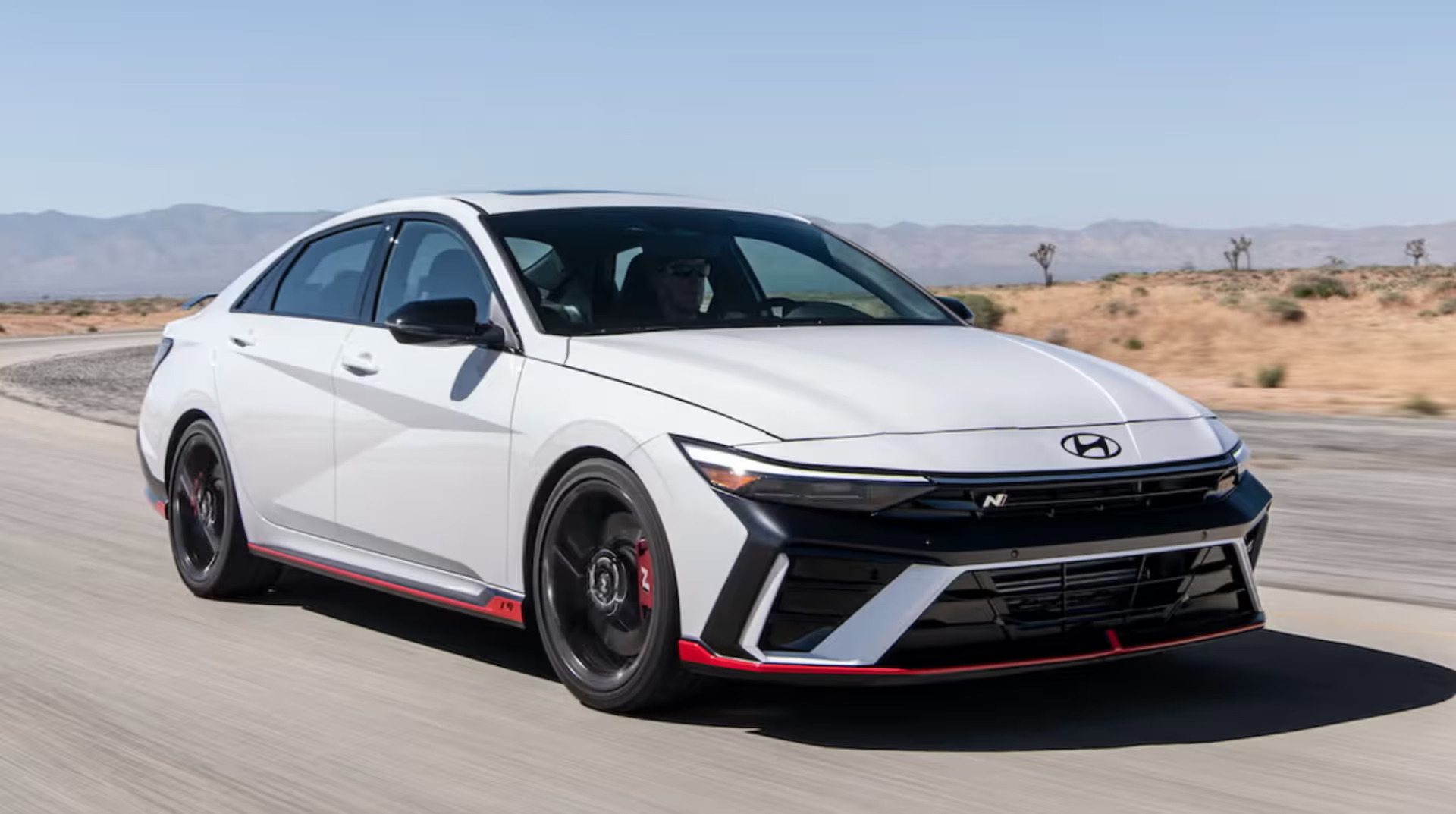
The side windows are generously sized, making it easy for drivers to keep an eye on cyclists, other vehicles, or pedestrians in adjacent lanes. For new drivers still perfecting their mirror-checking routines, the large glass area improves confidence and situational awareness.
Rearward visibility is aided by a decently sized rear window, although the sloping roofline does introduce a slight compromise compared to boxier cars.
Thankfully, Hyundai compensates with a high-resolution rearview camera and available blind-spot monitoring. Higher trims also include rear cross-traffic alert, helping reduce the risk of reversing accidents in crowded school parking lots or tight garages.
Perhaps most importantly, the Elantra comes standard with Hyundai SmartSense, a suite of driver assistance technologies.
Features like lane keeping assist, forward collision avoidance, and driver attention warning provide added safety layers for teen drivers who are still developing their reflexes and awareness behind the wheel.
In terms of driving dynamics, the Elantra offers light steering and predictable handling, making it easy for beginners to control.
It’s also fuel-efficient and packed with tech conveniences, including a user-friendly infotainment system that supports Apple CarPlay and Android Auto.
Overall, the Hyundai Elantra’s combination of strong visibility, thoughtful safety tech, and intuitive controls make it a dependable and confidence-inspiring car for teenagers beginning their driving journey.
7. Ford Maverick (Compact Truck Option)
Though technically a compact truck, the Ford Maverick deserves a spot on this list thanks to its car-like driving dynamics and surprisingly excellent visibility—especially useful for teen drivers who prefer or need something a bit more rugged than a typical sedan or hatchback.
The Maverick is built with a boxy, upright profile, which immediately enhances its visibility credentials. The high seating position offers an SUV-like perspective, giving young drivers the ability to see further down the road and better anticipate traffic flow.
Its windshield is tall and nearly vertical, framed by relatively narrow A-pillars, providing a wide and unobstructed view.
To the sides, the Maverick shines with large side windows and simple, squared-off lines that minimize visual obstructions.
The side mirrors are well-positioned and offer a broad view of adjacent lanes, helping teenagers more confidently manage lane changes or merges on the highway. Ford even includes blind-spot monitoring and lane keeping assist in higher trims to supplement driver vision.
The rearward view is one of the strongest in its class. Unlike many crossovers or sedans that suffer from sloping rear glass, the Maverick’s flat rear window and low tailgate allow for exceptional rear visibility.
This makes backing up—especially into parking spots or driveways—much easier. A standard backup camera with clear trajectory lines further assists with precise maneuvers.
Inside, the Maverick’s dashboard layout is clean and driver-friendly. The controls are intuitive, and the infotainment screen sits low enough not to block the driver’s sightline. Even shorter drivers can easily find a comfortable position where they can fully see the hood and road ahead.
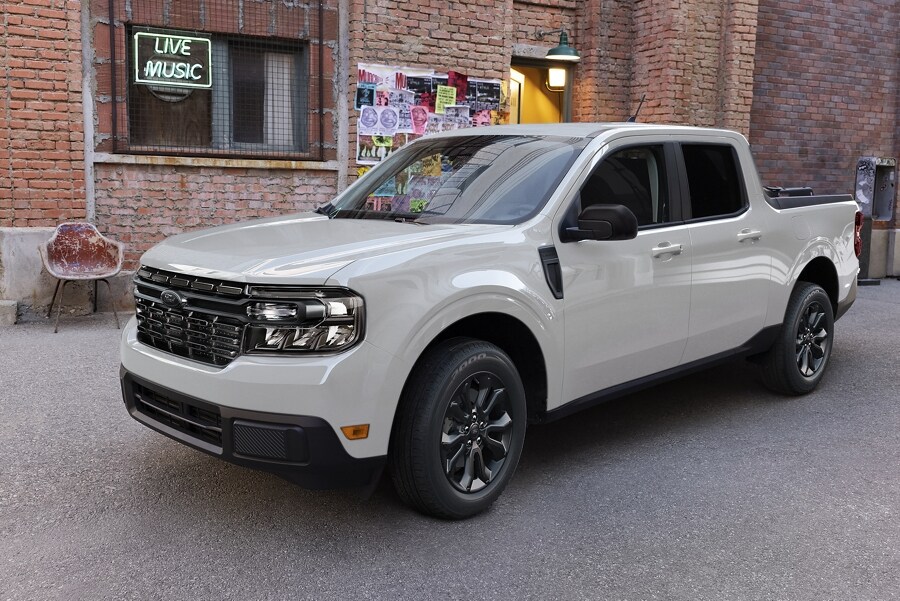
Though larger than a typical compact car, the Maverick drives much like one, with responsive steering and a manageable turning radius.
It’s also an attractive option for families who want a multi-use vehicle—one that can handle daily commutes, weekend projects, or school carpool duty while keeping safety and visibility top of mind.
For teens who need a small pickup with full-size awareness, the Ford Maverick offers a uniquely confidence-inspiring driving experience.
8. Mini Cooper 2-Door Hardtop
Don’t let its name or dimensions fool you—the Mini Cooper 2-Door Hardtop may be one of the smallest vehicles on the road, but it delivers surprisingly strong visibility, making it a worthy consideration for teenage drivers. Its compact footprint, upright windows, and elevated seating position make navigating tight streets and crowded lots a breeze.
A defining feature of the Mini Cooper’s visibility is its bubble-like cabin. The windshield is tall and steeply raked, with thin A-pillars that allow for broad forward sightlines. The seating position is higher than expected in such a small car, giving the driver a better vantage point for observing traffic and road conditions.
The Mini’s side windows are large relative to its size, and the low beltline makes it easier for teens to judge their position relative to the lane or curb. Rearward visibility is also better than average for a two-door vehicle.
The rear window is wide and minimally obstructed, providing a good view for reversing or backing out of driveways. Standard rearview cameras and optional parking sensors supplement this clear rear view, making low-speed maneuvering less intimidating for new drivers.
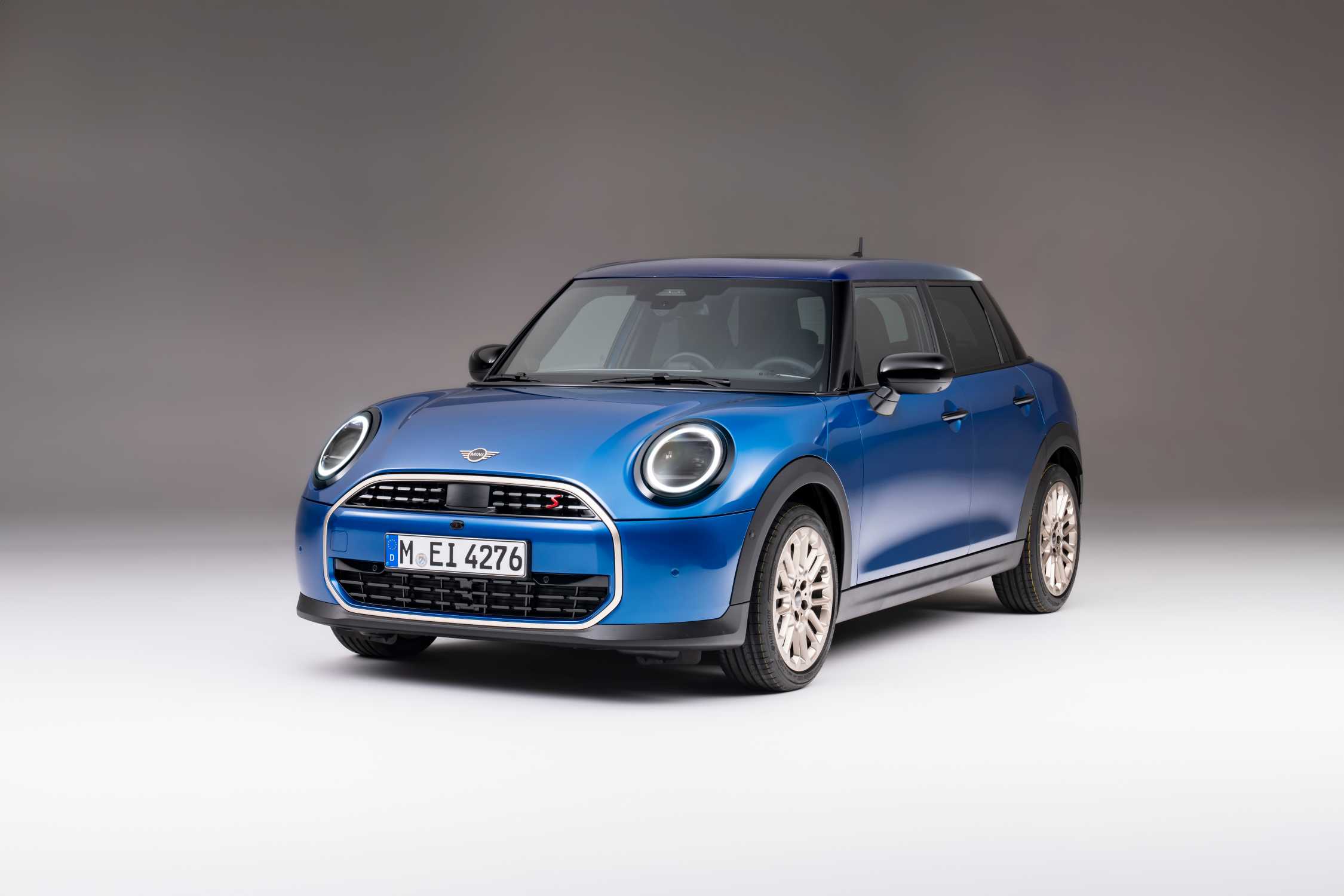
Despite its sporty styling and compact size, the Mini doesn’t suffer from the tunnel-like feel that plagues many modern cars. The upright pillars and nearly panoramic glass layout ensure the cabin feels open, light, and connected to the outside world—an important trait for young drivers still developing their spatial awareness.
The Mini’s precise handling and small turning circle also make it easier to park and weave through city traffic. It feels agile yet stable, and its modest power levels in base trims reduce the risk of overwhelming an inexperienced driver.
With its fun personality, distinctive style, and unexpected attention to driver visibility, the Mini Cooper 2-Door Hardtop is a great pick for teens who want a car that’s both safe and expressive.
9. Mazda3 Hatchback
The Mazda3 Hatchback is often celebrated for its athletic styling and dynamic driving experience, but what often goes underappreciated is its carefully engineered visibility features—especially valuable for teenage drivers.
Mazda has designed this compact hatch with a driver-first philosophy, and that includes attention to visibility, ergonomics, and intuitive controls.
From the driver’s seat, the Mazda3 offers a well-proportioned view of the road ahead. The dashboard sits low, and the A-pillars are thinner than average, which enhances forward sightlines.
Despite its sporty aesthetic, the sloped hood design and cowl placement allow drivers to easily judge where the front of the car ends—critical for parking and low-speed navigation.
Side visibility is supported by a comfortable driving position and sizable windows along the front doors. However, the Mazda3’s C-pillars are thick, which slightly compromises rear-quarter visibility.
To address this, Mazda includes a standard rearview camera and available blind-spot monitoring on most trims. These features help eliminate guesswork during lane changes or when backing out in crowded areas—tasks that can be especially stressful for new drivers.
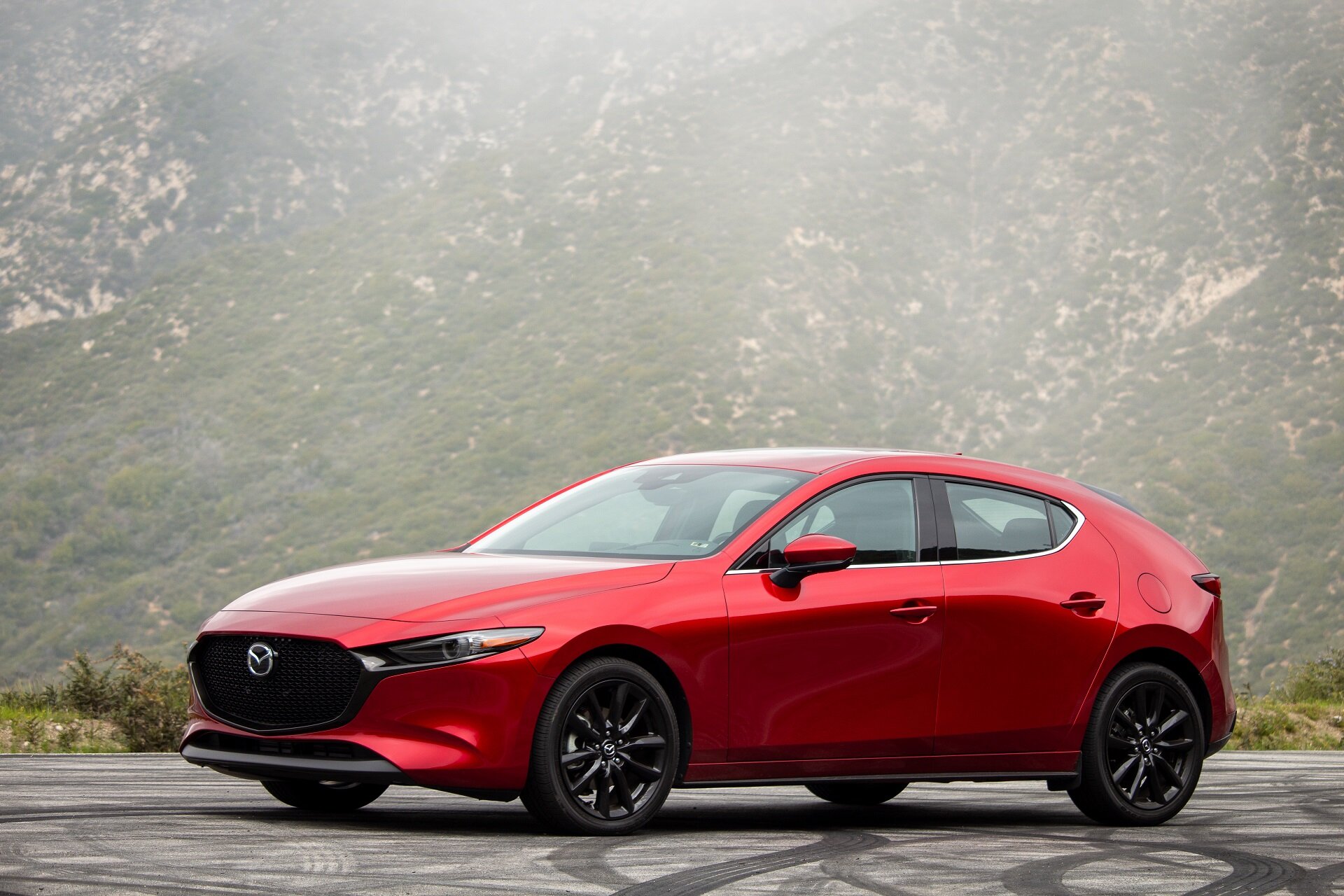
One of the Mazda3’s strengths is the clarity of its mirrors and controls. The side mirrors are large and well-positioned, and Mazda’s heads-up display system (on higher trims) projects speed and navigation data directly into the driver’s field of view, reducing the need to look away from the road.
Rear visibility through the hatch window is decent, though not as expansive as boxier rivals like the Kia Soul. Still, the Mazda3’s tech assists—like rear cross-traffic alert and parking sensors—fill in the gaps, making reversing safer and easier for teens.
Perhaps the biggest draw for teenage drivers and their parents is the balanced ride and responsive handling. While it’s engaging for enthusiastic young drivers, it’s also predictable and composed, encouraging responsible driving.
Add in strong crash test scores, and the Mazda3 Hatchback becomes a well-rounded option that doesn’t force you to choose between style and safety.
For teen drivers who want a sporty look without sacrificing visibility and safety, the Mazda3 Hatchback offers a compelling and confident package.
10. Subaru Crosstrek
The Subaru Crosstrek is a subcompact crossover that blends rugged styling with practical dimensions, making it a strong candidate for teenage drivers who need both safety and visibility.
What makes the Crosstrek unique is its elevated ride height, expansive glass area, and thoughtful design, all of which contribute to clear and confidence-boosting sightlines.
At the front, the Crosstrek features a high seating position that places the driver above most compact cars. This not only improves visibility over the hood but also provides a better vantage point in traffic and at intersections.
The windshield is wide and steep, and the A-pillars are carefully contoured to minimize blind spots during turns or merges.
The side windows are generously sized, and the door-mounted side mirrors are large and give a clear view of adjacent lanes. These help teen drivers better anticipate traffic changes and reduce lane-change anxiety.
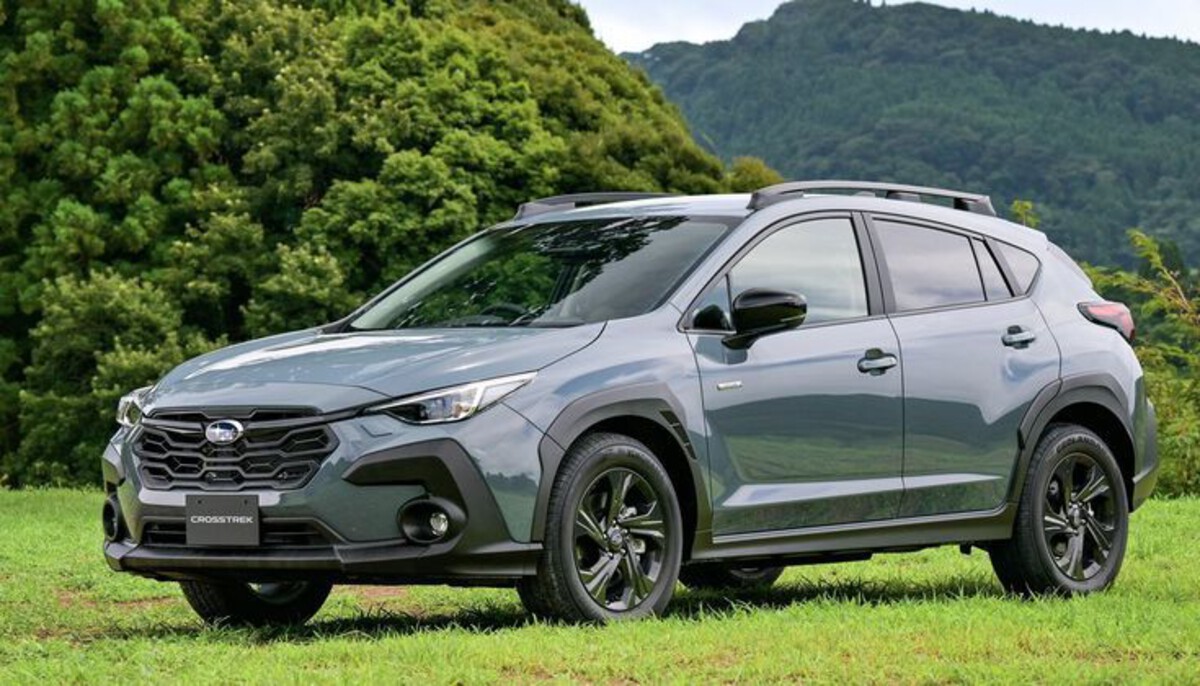
Subaru also includes blind-spot detection and lane change assist in many trims—critical tools for younger drivers who are still refining their visual scanning techniques.
Rear visibility in the Crosstrek is excellent. The large rear window and vertical tailgate glass provide a wide field of view. Combined with a standard rearview camera, backing up is straightforward, even in tight school parking lots or parallel parking zones.
Higher trims offer rear cross-traffic alert, which warns the driver of approaching obstacles from the side.
Another major advantage is the Subaru EyeSight Driver Assist Technology, which includes adaptive cruise control, lane keeping assist, and pre-collision braking—all features that enhance teen driver safety while supporting their growing confidence behind the wheel.
The Crosstrek’s compact size makes it easy to park and maneuver, while its all-wheel-drive system adds an element of security in poor weather conditions. For teenagers in regions with rain, snow, or varied terrain, this is a big bonus.
In short, the Subaru Crosstrek offers visibility from every angle, wrapped in a safety-conscious, easy-to-drive package. For parents and teens alike, it’s an ideal entry into responsible, capable motoring.
Choosing the right vehicle for a teenage driver involves much more than comparing horsepower or tech features.
At the top of the priority list should be visibility—a factor that plays a pivotal role in ensuring safety, building driver confidence, and supporting the learning process.
Teen drivers are still developing spatial awareness and reaction timing, and a car that offers clear sightlines in all directions can help bridge that experience gap.
Throughout this article, we’ve looked at ten compact cars that deliver exceptional visibility through thoughtful design, upright seating positions, expansive glass areas, and high-tech assistance features.
Each vehicle on this list brings a unique approach to enhancing the driver’s field of view, whether it’s the tall, boxy design of the Kia Soul, the panoramic sightlines of the Honda Fit, or the commanding perspective of the Ford Maverick.
One of the most significant benefits of enhanced visibility is early hazard detection. Whether it’s spotting a pedestrian stepping into the street or noticing a cyclist in the blind spot, good visibility can buy a teen driver crucial seconds to respond.
Combine that with safety features like blind-spot monitoring, lane departure warning, and rearview cameras—as found in the Subaru Crosstrek, Hyundai Elantra, and Toyota Corolla Hatchback—and you have a powerful combination that supports safe driving behavior.
It’s also worth noting that visibility contributes to overall driving comfort and confidence. When a young driver feels they have a good grasp of their surroundings, they’re less likely to make erratic maneuvers or second-guess themselves while driving.
This can reduce stress and improve attentiveness, both of which are vital for safe driving. Vehicles like the Volkswagen Golf and Mini Cooper deliver this sense of control through clear sightlines and responsive handling.
The importance of rear visibility should not be overlooked either. For many teens, backing into a spot or navigating a crowded school parking lot can be intimidating.
Cars with wide rear windows, clear camera systems, and helpful sensors—such as the Mazda3 Hatchback or Subaru Crosstrek—can make these everyday tasks feel manageable instead of daunting.
Lastly, the variety of body styles on this list—sedans, hatchbacks, crossovers, and even a compact truck—demonstrates that strong visibility isn’t limited to one category.
There’s a suitable option for every type of driver and family, depending on needs, preferences, and budget.
From the stylish practicality of the Corolla Hatchback to the multi-purpose Ford Maverick, these vehicles prove that you don’t have to sacrifice safety for aesthetics or capability.
In conclusion, when helping a teen driver select their first vehicle, prioritize what matters most: a car that lets them see the road clearly and respond to it effectively.
Visibility isn’t just a feature—it’s a foundation for lifelong safe driving habits. Fortunately, the ten vehicles listed here offer just that: a clear view forward, and a safer journey ahead.
Also Read: 10 Cars With Seat Material That Holds Up Against Pet Hair

